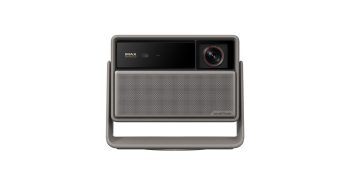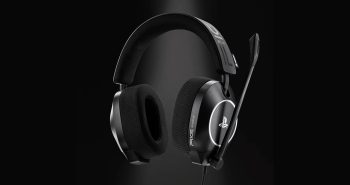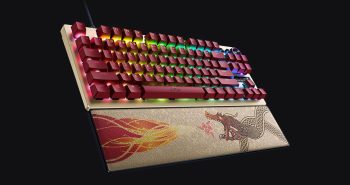Armed Assault II, or ‘ArmA II’, is the sequel to the popular war game Armed Assault which was the spiritual successor to the popular war game Operation Flashpoint. If that last one sounds familiar to you, it is because Bohemia Interactive Studio (BIS) were the game’s developers under the watchful publishing of Codemasters Interactive. The upcoming sequel to Operation Flashpoint is, good or bad – depending on your view, not being developed by BIS. So now that the history lesson is over and done with let’s talk about Armed Assault II.
Armed Assault II is, like its predecessor, divided up into multiple areas of play. In the singleplayer modes you can train in multiple boot camp-style scenarios which do a fine job of preparing you for the various elements of gameplay you will encounter. The campaign can be played locally or hosted for your buddies to join in and is a real improvement over the first game’s campaign.
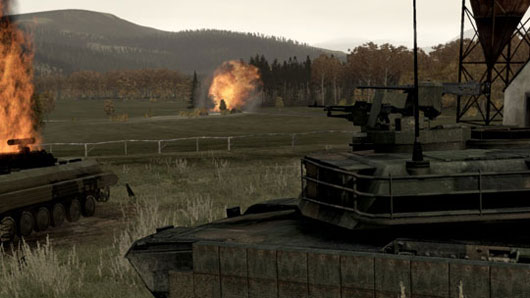
In Armed Assault 2 you find yourself on the ex-Soviet republic of Chernarus in a battle with multiple factions all duking it out for their own agendas. Your character is part of a United States Marine Corps Force Recon team known as ‘Razor’ and are the cream of the crop, as they say. However, don’t go thinking you are the bloody Master Chief here or anything – you are VERY vulnerable, as anyone who has played the original Armed Assault knows. Wounds are not taken lightly – a couple of moderate hits and you are a goner! Thankfully, this area of the hardcore gameplay has been toned a bit with the introduction of a first-aid system where team mates can heal one another if the injuries are not too mortal. You can even drag your wounded soldiers about to cover if necessary.
Aside from this improvement the campaign feels very similar to the first game’s and any ArmA vet should feel right at home relatively quickly. New players would be wise to go through all of the Boot Camp missions as well as have a friend who has played before show them the ropes – a great opportunity to cooperatively tackle the game right off the bat! ArmA II has a high learning curve, spartan user interface, and non-standard shooter controls which serves to complicate the matter. For example: In most shooters, pressing one of the number keys will change your currently-selected weapon. In ArmA II, you use those to access the commands menu for whatever soldier or unit is assigned that particular number.
Missions, unfortunately, are a bit wonky in terms of triggers and end goals. Being that ArmA II takes place on an ambitious 225,000 square miles of land, all of which are open to you, brings some problems with the linear mission formula. Performing a task out of sequence or altering the current mission by bringing in something unexpected like bringing a vehicle from somewhere else can screw up the triggers the game uses to pace out, and detect, mission objectives. When this happens it usually means your mission is stuck in limbo, being cursed never to end, your only recourse to restart it.
Unit artificial intelligence has definitely been improved upon but is still subject to bouts of ‘brain freeze’, especially in vehicles where an NPC is the driver to your gunner. Issuing orders to the unit often causes them to pause as they plan out what you just told them to do. This hesitation is sometimes just enough to get you killed or throw off your aim. When the artificial intelligence works, though, it really works and sometimes you will forget the person you are shooting at, or is shooting by your side, is actually an AI. Couple this AI, which is also dynamically ‘thinking’, with the previously-mentioned ‘wonky triggers’ and every play-through is a surprise, positive or not.
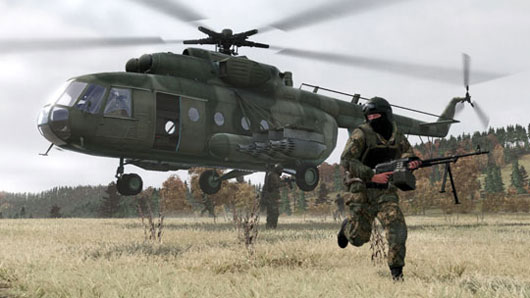
The bug-factor in the North American release, while not nearly as bad as the earlier European release, is still a real bother. I experienced more than a few CTDs and freeze-ups throughout my playtime with the game. Going by the European release (pre-recent European patch), this is a big step up. That being said, when looking at the attention BIS has given to the original ArmA over the years in the way of patches and enhancements, I have every confidence these bugs will be mostly worked-out within six months.
ArmA II features some very stellar visuals given two things – your graphics settings and your PC hardware. The first time I began playing the game I felt literally hornswaggled as the graphics appeared grainy and rough, not at all anti-aliased or smoothed out. In perusing the options though, I found that by playing with the ‘fillrate optimizer’ I could get the game to look like all of those spectacular screenshots! Unfortunately, the test rig’s Intel i7 2.6gHz CPU, GTX 280 video card, and 6GB of DDR3 RAM were just not enough to handle this quality and I realized with those graphics settings all I could do was take pretty screenshots. This is not really a bad thing or downside – it is actually a positive point. ArmA II is big, real big, and it needs a very powerful machine to run it at maximum. It will be a pleasure to grow into it as PC technology becomes less expensive. I have come back to so many games a year down the line and realized that they aged in the most awful way when compared to what’s new on the market. I have a feeling that Armed Assault II will not be one of them. Don’t fear, by tweaking the graphics settings a bit I was able to find a happy medium between pleasing visuals and performance – and so will you.
Reviewing the North American version, I have to mention the game’s awful voice acting. Most of the characters in the campaign sound extremely wooden and amateur at best. I must caveat this by saying that the actors are non-native English speakers which is most likely the cause of this poor acting. In their respective native dialects I am sure they are more than fine, just not in this version of ArmA II.
In the multiplayer menu you will find the ability to jump into player-created servers with multiple randomly-generated missions and types (CTF, C&H, and more). This adds a ton of spice to the mix and co-op and versus play with other people is really where ArmA II shines like nothing else. Again, this is definitely more of a war simulation than shooter – Battlefield 1943 it ain’t, and thankfully so, just be prepared for that.
The mission editor which made ArmA so popular and still keeps it burning brightly among fans is back and allows gamers to build all manner of missions, from the droolingly-simple to insanely complex by way of the built-in scripting language. If multiplayer is where the game shines, then the editor is what does the shining. All one has to do is look at the hundreds of fan sites out there churning out player-made missions as well as other mods – vehicles, weapons, etc to know this.
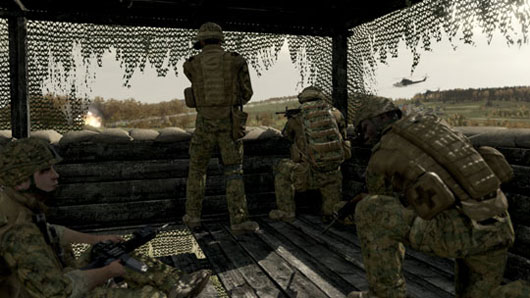
One feature which brought a bit of a break to the normal goings on of ArmA was ‘The Armory’ – a place where the gamer could try out the various weapons systems available in the game and take them on different challenges. BIS has brought the mode back in the sequel, and completing these challenges will result in more systems being unlocked for you to try. For instance, if you try the USMC M2-equipped Humvee, you could be asked to drive an obstacle course or even charge an enemy encampment! While not the main focus of the ArmA II, this mode provides a lot of entertainment in its own right.
Overall, Armed Assault II is an exceptional war-simulation that is just the thing for those gamers looking for extreme realism and depth. It definitely has its current stable of issues, but none of them are things that can’t be patched and, in the meantime, when the game runs as promised it really does feel like being part of a gritty and intense war. I can’t think of another title out there right now that fits the Armed Assault II bill in terms of its scope and multiplayer capabilities.
Speaking of which, I am Oscar Mike dear reader – have to get a game going. You can find more on Armed Assault II at the official game website.

